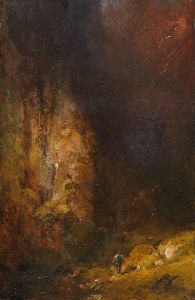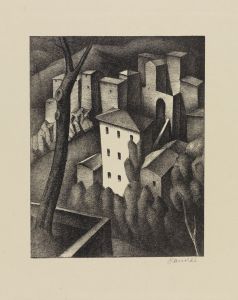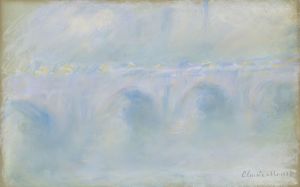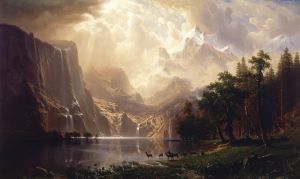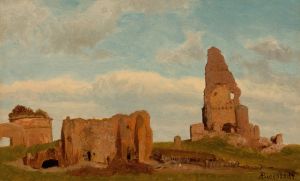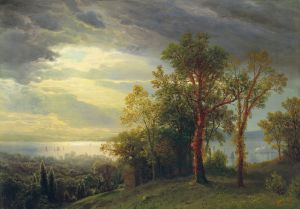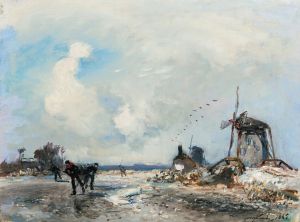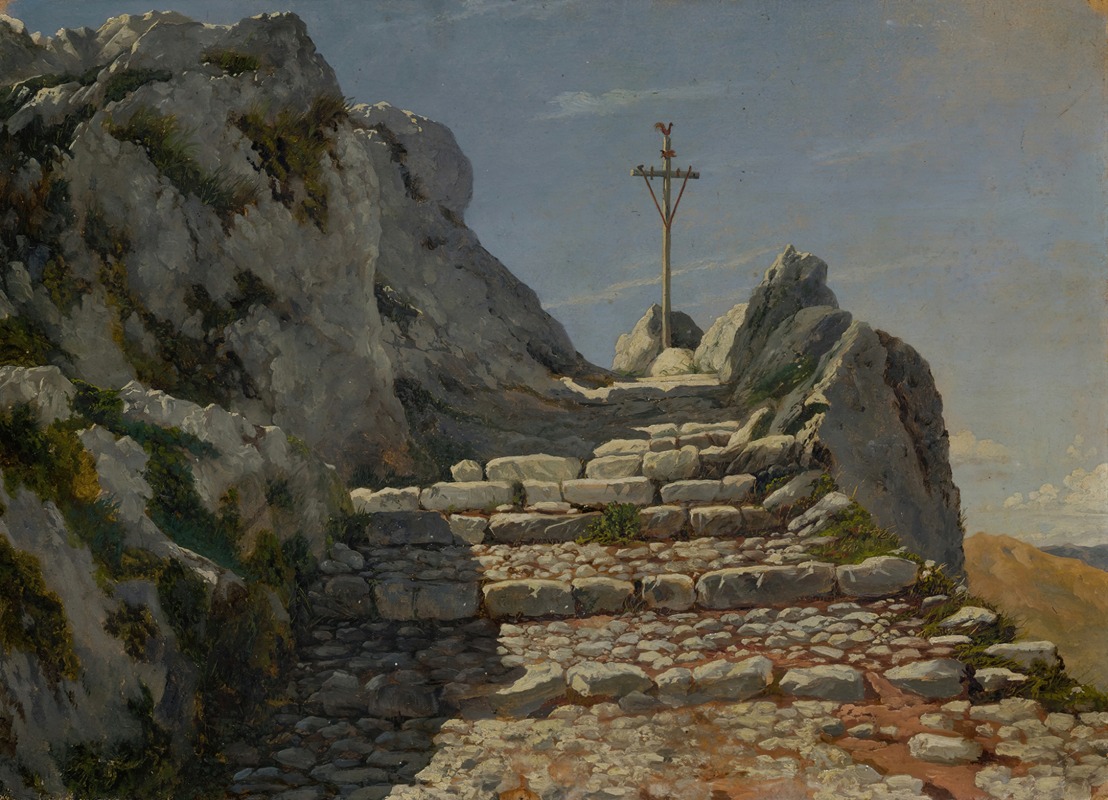
Landscape
A hand-painted replica of Albert Bierstadt’s masterpiece Landscape, meticulously crafted by professional artists to capture the true essence of the original. Each piece is created with museum-quality canvas and rare mineral pigments, carefully painted by experienced artists with delicate brushstrokes and rich, layered colors to perfectly recreate the texture of the original artwork. Unlike machine-printed reproductions, this hand-painted version brings the painting to life, infused with the artist’s emotions and skill in every stroke. Whether for personal collection or home decoration, it instantly elevates the artistic atmosphere of any space.
Albert Bierstadt was a renowned 19th-century American painter known for his grandiose landscapes of the American West. His works are celebrated for their dramatic use of light and meticulous attention to detail, capturing the vastness and beauty of the American wilderness during a time of westward expansion. Bierstadt was part of the Hudson River School, a group of artists who focused on romantic landscapes and the sublime beauty of nature.
One of Bierstadt's notable works is "Landscape," which exemplifies his skill in portraying the majesty of the natural world. Although specific details about this particular painting titled "Landscape" are limited, it is consistent with Bierstadt's broader body of work, which often features sweeping vistas, towering mountains, and expansive skies. His landscapes are characterized by their luminous quality, achieved through a technique known as luminism, which emphasizes the effects of light and atmosphere.
Bierstadt's paintings were not just artistic endeavors but also served as a form of visual documentation of the American West. During the mid-19th century, he joined several expeditions to the western United States, including trips to the Rocky Mountains and Yosemite Valley. These journeys provided him with firsthand experiences and sketches that he later transformed into large-scale studio paintings. His works played a significant role in shaping the perception of the American frontier, inspiring both awe and a sense of adventure among his contemporaries.
"Landscape" by Bierstadt likely reflects his typical thematic elements, such as the interplay between light and shadow, the grandeur of untouched nature, and a sense of tranquility amidst the wilderness. His paintings often include a meticulous rendering of natural elements, from the texture of rocks to the delicate play of sunlight on water. Bierstadt's ability to capture such details contributed to the immersive quality of his landscapes, inviting viewers to experience the scene as if they were standing within it.
Bierstadt's work was well-received during his lifetime, and he gained considerable fame and financial success. His paintings were exhibited widely, and he became one of the most prominent landscape artists of his era. However, his reputation experienced a decline towards the end of the 19th century as art movements shifted towards modernism. Despite this, his work has undergone a resurgence in appreciation, particularly for its historical significance and technical mastery.
Today, Bierstadt's landscapes are held in high regard and are featured in numerous prestigious collections, including those of the Metropolitan Museum of Art and the Smithsonian American Art Museum. His paintings continue to be celebrated for their contribution to American art and their role in documenting the natural beauty of the United States during a pivotal period in its history. While specific information about the painting "Landscape" is limited, it remains an integral part of Bierstadt's legacy as a master of landscape art.






